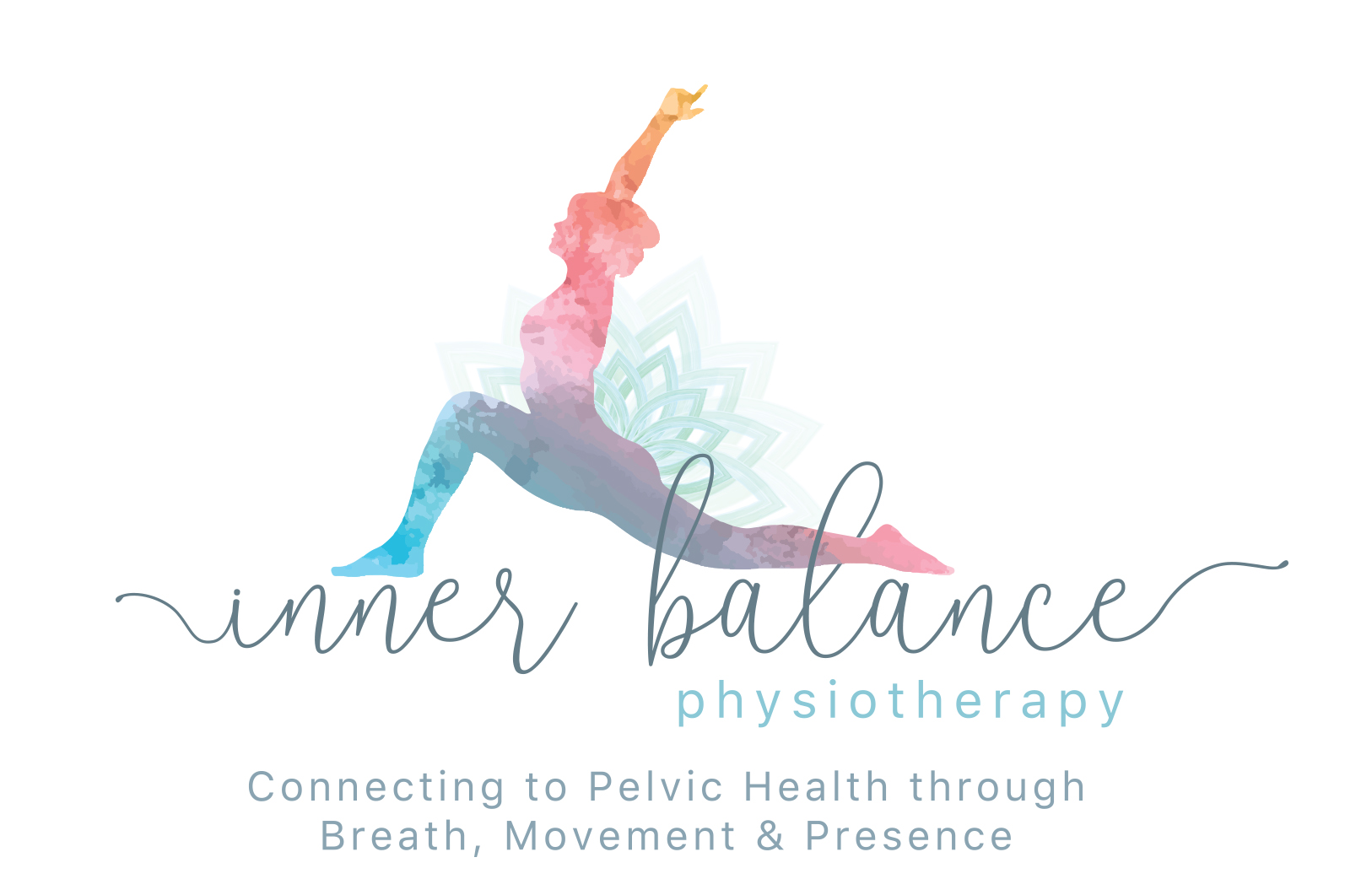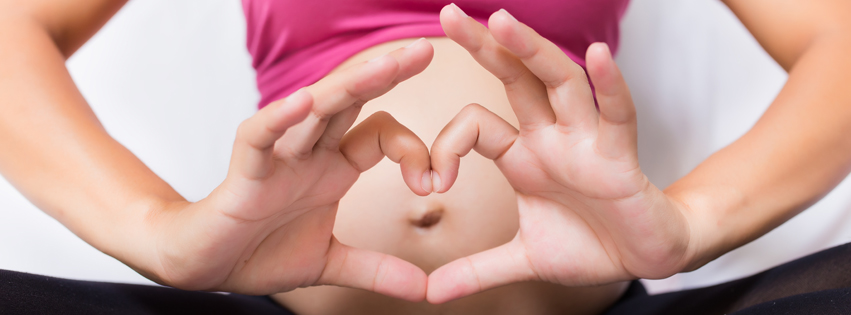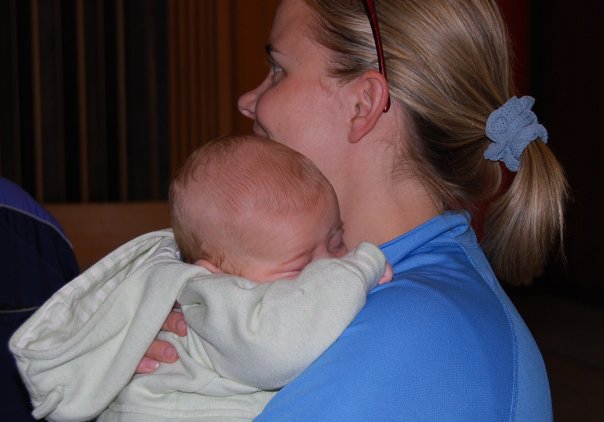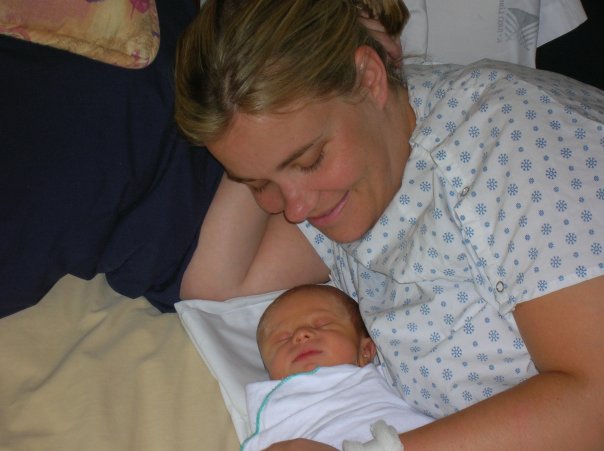
THE BARBELL BLOG
A solid resource squeezing out the facts
What to Expect at your appointment with a Pelvic Floor Physiotherapist
Corinne Langford, Pelvic Floor Physiotherapist and owner of Inner Balance Physiotherapy explains what happens at your Pelvic Floor Physio appointment.
Corinne Langford is a mom of two, a Calgary pelvic floor physiotherapist since 2004, and is currently studying yoga therapy. Thank you for writing this guest blog post for us!
Ok, you’re thinking about it. You’ve heard about pelvic floor physiotherapy, either from a friend, your mom, another health practitioner, or through a google search. It’s not uncommon for it to take a moment to sink in as you think “they do what?”.
It’s true. Pelvic floor physiotherapy is successful because there is no guess work, we assess and treat the pelvic floor directly. It’s really all just anatomy, albeit a very personal area of anatomy.
But we should be caring for our pelvic floor the same as we care for our shoulder, knee or foot. It’s an important area of our body that is often under treated, which is a sin because our pelvic region goes through A LOT over our lifetime.
So what exactly does an assessment look like? First of all, pelvic floor physios tend to have a looong intake and history form. It’s a very big umbrella for such a little area, so we will talk about your general health history, childbirth experiences, concerns with intercourse, and ask all about your bladder and bowel habits and symptoms. We will ask about your job, daily activities and your exercise regime. Honestly, my favourite tidbits of information often start with “this might not be related, but....”. Sometimes it’s not related, but I have found more jewels of insight from these statements then I can remember. Generally, its ALL related.
After we chat, I explain what the actual assessment will entail (keep reading for this insider knowledge). Then comes the most important thing for my client to understand: the consent form. The most important piece of information on this sheet is that the client can withdraw consent, at any time, on any appointment. Honestly, it’s ok. I always say “we don’t have to do this all at one time, if you feel overwhelmed, or uncomfortable at any point, let me know and we can do the rest next time. And this goes for any treatment session”. We have SO much education and externally based topics to go through (posture, toilet education, positioning), we can always concentrate on these things. But truly, the sentiment expressed after assessments is “ok, that wasn’t as bad as I thought”.
I want this to be a very gentle, respectful, educational, and empowering experience for each client, every time.
Sometimes the assessment will start with some screening tests looking at pelvic joint symmetry/pain with movement. In fact, if a client comes in with predominant concerns of symphysis pubis or sacroiliac joint pain, our initial assessment/treatment may be entirely external.
Our “pelvic floor assessment” starts off with assessing diaphragmatic function, which is so very closely linked with pelvic floor function. In fact, regardless of whether we will be working on strengthening the pelvic floor, or relaxing the pelvic floor, we will use the diaphragm. I then look at the abdominal musculature. I am primarily looking for muscle tension, muscle activation, scar tissue, and I will assess for a diastasis recti.
The assessment itself starts off with visualization of the external genitalia. I am looking for skin changes or discolouration, descent of the tissue, scarring, and the general health of the labia. I will complete a couple of other external tests, and then I gently palpate along the vaginal walls, feeling for increased or decreased muscle tone. Sometimes the muscles are so tight that I am not able to comfortably access the deeper pelvic floor muscles.
I always assure clients that I will NEVER push past tight and sore muscles.
If the superficial pelvic floor muscle are extremely tight, assessment turns into treatment and I start teaching my client how to connect with and relax the pelvic floor muscles. If there is not too much tension, I will assess for muscle activation/strength, balance, and endurance. I use this information to choose the type of “kegel” I would like my client to start with. Believe it or not, I have 9 types of kegels to choose from to recommend, including some that actually teach how to relax the pelvic floor.
The assessment may also include a rectal assessment, which will assess the integrity of the anal sphincters, as well as the rectal walls. I will ask the client to contract/relax these muscles, as I assess tone/tension. This is an excellent way to directly assess the position and mobility of the tailbone. Like the vaginal exam, this is a very gentle assessment.
After the assessment I leave the room so the client can get dressed, and then we go through the results, as well as the home exercise program.
Although there are some guidelines regarding reps and sets for kegels, it is ALWAYS quality over quantity.
So if the muscles are fatiguing after 5 repetitions during the assessment, then that is approximately how many will be in a set. Of course, this is if you even receive “strengthening” exercises, many people have come in for strengthening and left with a program that focuses on relaxing tight pelvic floor muscles (remember that tension and weakness often go hand in hand).
One of the most common mistakes made with kegels is trying too hard, you can’t bulldoze through these exercises. Initially, these exercises usually feel more like a “brain” exercise than a “muscle strengthening” exercise.
Eventually, within the program, clients can expect to have breathing exercises, postural exercises, and exercises that coordinate the pelvic floor with the transverse abdominus, and other muscle groups (ie. glutes).
One of the things that surprises many people, is how many topics we will address. For example did you know that constipation is a very common cause of pelvic organ prolapse, and urinary incontinence? Or that calf tension can contribute to pelvic floor tension? Honestly, the interconnection between different areas of our body is fascinating.
Other Tidbits:
Assessments and treatments are all for 1 hour, although there are shorter appointment slots if we are near the end of a treatment program and doing more of a “check in”. But you’d be surprised at quickly an hour goes by.
Initially, appointments are every 2 weeks, and then we start to stretch it out. The average number of visits is between 4-6. But to be honest this depends on how many things we have to treat, the severity of symptoms and of course how often you do your exercises.
Clients are always welcome to bring their baby and kids. It is absolutely easier for the client if they are on their own, because then they can just focus on themselves. But sometimes this just isn’t feasible. Sometimes babies sleep, and sometimes they cry. It’s all good, we just work around their needs.
The overwhelming sentiment expressed after a couple of visits is one of empowerment.
People are often surprised at how much they learn about themselves and pelvic health. And many comment on how really, in an ideal world, every woman would have at least an initial assessment. Our bodies go through so much, and pelvic concerns are often under treated because many don’t realize that there are treatment options available for most conditions.
Remember, pelvic symptoms are common but NEVER normal.
.Corinne Langford BScPT Corinne is a pelvic floor physiotherapist with Inner Balance Physiotherapy, and the Lifemark Health Centre - Sundance. A pelvic floor physiotherapist since 2004, Corinne treats men and women with all pelvic concerns ranging from pelvic floor weakness, incontinence, pelvic pain, prolapse. Inner Balance Physio offers one on one sessions of pelvic floor physiotherapy in Calgary, one on one in home sessions, pelvic health workshops, and classes. Corinne is dedicated to helping her clients discover and develop their own inner source of healing and strength.
Postnatal Fitness - When can you start exercising again?
Postnatal Fitness - Healing your body comes first.
“Slow is fast when you’re making a return to activity postpartum. You need to build that baseline first, hone that foundation, so that you CAN make a strong return.
So that you are setting yourself UP, not setting yourself BACK by the choices you make postpartum.”
It is so important to take the time to rehab and retrain postpartum.
You will get back to doing the things you love.
But build that foundation FIRST.
I experienced a traumatic birth with my first child. Forceps, vacuum, episiotomy and 6 weeks later, my GP gave me the green light to exercise. And so I did. Running. Bootcamps. Crunches. All of it. I did not heal my core and pelvic floor before starting back into exercise and until recently, I was still feeling the consequences. I want you to do better. I want you to be able to do all that you want to do. Symptom free. But it takes a little bit of work to get there.
After a very long and difficult labour, this little light came into the world.
Many women will suffer from some form of pelvic floor dysfunction and they may not even be aware. Or they are aware, but think that it's just part of their new normal. Urinary incontinence, diastasis recti, pelvic organ prolapse, etc. are common but NOT normal.
I get asked the question a lot. "When can I get back to running, my regular HIIT classes, yoga classes?"
Well, that depends.
How are you feeling?
Are you getting enough sleep?
Do you have any pelvic floor dysfunctions?
Do you leak when you run?
Do you have Diastasis Recti?
Pelvic Organ Prolapse?
If the answer is yes, you probably need to scale back. You need to work on strengthening your inner core before you get back at it. (and see a pelvic floor physio!)
What if you don't have any symptoms?
Well, that depends too.
How do you feel after you go for a run?
Or a spin class?
Or a bodyweight home workout?
Do you feel like you're D.O.N.E. for 3 days afterwards?
Are you so sore that it hurts to pick up your baby?
Well, then you might want to rethink your exercise choices. Was that class/run worth it? Was that 45 minute sweat worth a day of exhaustion?
I get it. Sometimes we need that sweat. We need the mental release that exercise gives us. But could you change up your exercises in that postpartum phase? What about walking up a hill or walking stairs? Great for the gluts and you can get your heart rate up. What about giving yourself another month or two and making sure that you're good to go before you get back at it. What if you modify for just a little while longer?
You can and will get back to doing what you love. But take some time to heal, recover and rehab FIRST!
And enjoy that snuggle time with your baby. It really does go by so fast.
6 weeks old snuggles.
The Benefits of Postnatal Fitness
- Increases rate of postnatal recovery when done in a safe manner
- Radiates positive self-image and confidence
- Reduces rates of postpartum anxiety and depression
- Increases range of motion, strength, and flexibility
- Brings attention to core strength and posture which often is hindered by carrying and feeding a new little one.
- Increases cardiovascular health and improve bone mineral density.
- Provides an opportunity to be active while bonding with baby
- Provides a social outlet meeting other moms in the community
Postnatal exercise offers a whole range of benefits for new moms. However, it’s important to remember that you should always consult with your doctor before starting up an exercise program.
As well, I HIGHLY recommend seeing a Pelvic Floor Physiotherapist after your delivery.
There are classes at big gyms where the instructor doesn't know that you have a 12 week old baby. Where there are too many people for them to give you modifications.
There are also a lot of trainers who know what to look for, what to ask and what to modify. I teach classes in Calgary but there are other postnatal fitness specialists all over the world who can help you too. Don't assume that because you can bring your kids that the instructor knows the ins and outs of postnatal fitness. Ask the questions!
Every body is different and we can determine a safe route for you.
You can and will get back to doing what you love. But take some time to heal, recover and rehab FIRST!
You have Pelvic Organ Prolapse. Now what?
Pelvic Organ Prolapse.
Read more about the symptoms of POP and considerations on what to do from here.
Pelvic Organ Prolapse.
What is it?
When the pelvic organs (such as bladder, uterus and rectum) drop down into the pelvis. There are 3 types of prolapse:
Cystocele - prolapse of the bladder
Rectocele - prolapse of the rectum
Uterine - prolapse of the uterus
The grade of prolapse ranges from 0-4. Zero is when there is no prolapse and four is when the organ is moving outside of the body.
What are the symptoms?
Feelings of a bulge, heaviness or pressure in the vaginal canal. Sometimes worse at the end of the day or after some physical activity. Sometimes it's a low back pain or pelvic pain or there is urinary, bowel or sexual dysfunction.
And sometimes, there are no symptoms.
What to do?
A pelvic floor physiotherapist can assess and determine the degree of prolapse and they can help. Some women do end up with surgery, but please don't take this as the only option available to you.
What now?
I recently had a client who didn’t exercise for years because she was afraid. Afraid it would get worse. We took it slow and found out what worked best for her. There are ways to manage and control symptoms.
Some things to consider:
First of all, how are you sleeping? What is your stress level? Often times, when these things aren't in check, symptoms can be worse.
Vary your body position when you're exercising. Lie on your back. Stand up. Kneel. Change it up. Move your body in lots of different positions.
Check your alignment. Make sure your bum is not tucked in and your ribs aren't flared up. Try to have your ribs over your hips.
Check your breathing! Exhale on exertion. Inhale and relax your pelvic floor. Once you're about to start the hardest part of the exercise, start your exhale and lift your pelvic floor.
But if that breathing strategy doesn't feel great, then try something different. It's definitely something that is not a cookie cutter for everyone and every exercise. Find out what works for YOU.
Change it up:
You may need to change up some of the exercises you did prior to your prolapse. You will need to tune into what each exercise does for your symptoms.
You might need to stay away from some certain exercises such as wide leg exercises, 'traditional ab' exercises such as sit-ups and leg lowers (if you do not know hot to manage the intra-abdominal pressure); weighted exercises that put pressure on the pelvic floor (overhead press, lat pulldown), and high impact exercises.
This doesn't mean you need to stay away from them FOREVER! You need to change the strategy with that movement. You need to make sure you can effectively manage your breathing and your alignment during your daily activities and your workouts, and then you may be able to incorporate some of your former favourite activities.
Prolapse does not mean you have to STOP everything.
Be sure to search out some help and don't be to afraid to give some things a try.
You are not broken. There is hope in getting back to doing what you love.
Prenatal Fitness - What should you do?
Safe, suitable and regular physical activity throughout your pregnancy helps keep you and your baby healthy.
But it's so confusing. What can I do? Should I continue with this activity? Will this hurt the baby? Can I keep doing what I was doing? Will this exercise hurt my body?
So many questions! The answer? Read more.
Safe, suitable and regular physical activity throughout your pregnancy helps keep you and your baby healthy.
But it's so confusing. What can I do? Should I continue with this activity? Will this hurt the baby? Can I keep doing what I was doing? Will this exercise hurt my body?
So many questions!
And the answer?
Well, that depends.
I think you can count on the general rule that if you were exercising at a moderate to high intensity before pregnancy, you can continue (if there's no health concerns.)
If you were not exercising before pregnancy, this is not the time to rev things up. It's ok to exercise at a low to moderate intensity. And you CAN start exercising during pregnancy even if you weren’t very active before.
However, every body; every fitness level; every pregnancy makes it difficult to prescribe a one size fits all exercise plan.
There are so many benefits of exercising during pregnancy.
The Benefits of Prenatal Fitness
Boosts your energy
Helps you sleep better
Reduces pregnancy discomfort
Helps you prepare for childbirth
Reduces stress and lifts your spirits
Improves your self-image and confidence
Increases rate of postnatal recovery
Prevents excessive weight gain
Decreases risk of high blood pressure and gestational diabetes
Decreases severity of low back pain
With all these benefits, why wouldn't you exercise?
Well you have to ask yourself. How do you feel? Does the exercise make you feel good? Are you feeling any pain? If so, you need to stop and re-assess. Can you change the exercise? Can you lower the weight? Can you modify your position?
Does it make you want to stay in bed for 2 days afterwards being totally wiped out? Perhaps you need to lower the intensity. Rest is very important during pregnancy and you should honour that as well. You are building a human life and that takes its toll with nausea and exhaustion. Resting is important!
Should you continue to do all the things that you were doing before?
Well, that depends.
Are you doing activities that involve contact? (hockey, basketball, soccer)
Are you doing activities that could involve falling? (skiing, rock climbing, mountain biking)
Think about the risk vs the reward. What is the risk to you and your baby? What is the reward? Is the risk worth the reward?
When I was pregnant, I stopped skiing. Not because I thought it would hurt my body - I could ski runs confidently with no problem. I stopped because I was terrified of being hit by another person on the ski hill. That was my decision. Even though I love skiing, I determined the risk wasn't worth the reward.
Should you continue running? Think about the risk versus the reward.
What about running? The risk of contact or falling is pretty minimal. However, you need to consider the risk to YOUR body. Your pelvic floor is already supporting the weight of the baby and all the extra fluids. You need to think about the extra pressure that you're putting on it with the impact. It could affect your pelvic floor recovery.
There are some very safe and effective activities that will keep you and your baby safe. For example: walking, stationary cycling, swimming, prenatal yoga and strength training.
Strength training is amazing for your pregnant body as you train for life with your new baby.
Lifting your baby in and out of the crib. Moving the car seat to and from the car. Lifting the stroller in and out of the SUV. Carrying your screaming toddler out of the grocery store.
Strength training during pregnancy can help you with these activities postpartum and help train you for life as a mom.
If you start to feel extra pains with certain movements, it doesn't always mean you need to stop completely. It means that you need to reassess the movement and perhaps change the breathing strategy or your alignment with that movement. Try different positions. Try exhaling at different parts of the movement. Try different strategies.
Now is the time start thinking about the core and pelvic floor. Strengthening AND learning to relax the core and pelvic floor muscles will help you during labour and postpartum. Learning diaphragmatic breathing will also help you recover postpartum...read more about that here. And seeing a pelvic floor physiotherapist while pregnant will be a wonderful addition to your birth experience and a great start to your postpartum recovery.
Pregnancy might seem like the perfect time to sit back and relax. You likely feel more tired than usual, and you might feel some new aches and pains from the miracle that is growing inside of you. It's ok to take some time to rest.
Pregnancy is also a great time to be active. Just remember to cue into your body, be safe and have fun with it!
Do you pee when you sneeze? Top THREE things to do if you suffer from incontinence.
Incontinence is very common, but it is not normal. Here are the top 3 things you can do about it.
Do you pee when you sneeze or cough? When you laugh too hard? How about when you run or skip? When you lift something too heavy?
Are you afraid to hit a new class at the gym because you think you'll wet your pants?
Do you jump on a trampoline with your kids? Or do you stay off for fear of peeing your pants?
I am constantly hearing moms joke about peeing their pants, but you know what?
LEAKING IS NOT NORMAL!
Urinary incontinence is very common, but it is NOT NORMAL!
Urinary incontinence affects over 1 in 3 women in their lifetime.
ONE IN THREE!
But there are ways to FIX it!
First up, make an appointment with a Pelvic floor physiotherapist so they can assess what's going on. It may be the years of contracting your pelvic floor muscles that you can't relax them. Or it may be they are too weak. Or maybe it's something else.... Either way there are many things you can do to help the situation!
Being pregnant ALONE puts significant pressure on your pelvic floor. No matter what your delivery looked like, your pelvic floor is now changed. Then if you add in some tearing... or forceps... or episiotomy...during labour, there is some serious damage.
Typically your GP might send you on your way at your 6 week check up. This is NOT OK! You need to rehab and retrain those muscles. Just as you would with any other surgery of any other body part.
Your pelvic floor is part of your core system. And if you're leaking, that means your core system as a whole isn't working well, not just your pelvic floor. The core system includes your diaphragm, transverse abdominis and mulitifidus (back muscles) AND the pelvic floor. This whole system needs to be working together, communicating with one another to be working as an effective unit.
Even if you've had a C-section, your core system has been compromised... which means you need to work on retraining the system as well.
Jumping on a trampoline with your kids is not something you need to avoid for the rest of your life.
One of the main things you can work on is the core - connection breath. You can read more about the Piston Breath on Julie Wiebe's website. http://www.juliewiebept.com
Give this a try:
Take a breath, filling your whole core. Imagine the bottom part of your ribs to be an umbrella. Now as you fill with air you open that umbrella while opening up your hip bones. At the same time relax your pelvic floor.
Start your exhale, lift your pelvic floor - slightly - while bringing your hip bones back together. Exhale all the air out and imagine closing the umbrella.
Try it laying flat on the ground with your hands over your ribs, so you can feel the movement on your hands.
Mastering that breath and core connection is important. It won’t be something you have to do forever. Practice makes perfect and it will eventually become more automatic.
Check your alignment when you are wearing your baby. Bum untucked. Ribs over hips.
Another thing to keep in check is your posture and alignment.
Think about having your ribs stacked over your hips.
A LOT of us are either one of the following:
- Bum tuckers. Ribs are leaning backwards and bum is tucked under.
...or...
- Rib thrusters. Ribs are thrust up and out and the back is over-arched.
When you have your ribs stacked over your hips, you are in a better position for proper breathing and movement. And it helps create the optimal intra-abdominal pressure in your core.
But you don't have to be perfect ALL the time. Life happens. We have to pickup our toddler while simultaneously feeding our baby. Or we have to pickup the baby with groceries hung over one arm. It's important to think about it, recheck and re-align. But don't beat yourself up if you find yourself in alignment that's not neutral all the time.
“If you leak while you run, you are leaking more than just urine. You are leaking energy, strength and athletic performance.”
You don't need to live with incontinence. Whether it be when you're laughing, coughing, jumping rope, or running, it doesn't need to be your new normal. Here's what you should do.
- Book your appointment with a Pelvic floor physio therapist.
- Master your core-connection breath.
- Check your alignment.
And fire me a message if you have any questions or need a recommendation for a PT in your area. The fact is, it's not going to get better as you age. You need to do something about it now.
You can get back to life without leaks. It will require a little bit of effort. But aren't you worth it?
My Postpartum Running Story
Read about my postpartum running story and the lesson learned.
POSTPARTUM IS FOREVER.
You CAN get back to doing the things you love. Take your time. Have patience. You will get there.
Post-race Snuggles
This is a picture of me, my scrunchy and my first child, when he was three months old. I just finished running part of the Banff Ekiden Relay. A 42.2km relay race, split into five sections. I ran the fourth leg - a 5.9km race with, as I recall, a stupid hill somewhere in there.
My running buddy Jen and I after the race
I look at that picture now and think: "What the hell was I thinking?"
You know what I was thinking? Get the pre-baby body back. Get back to the fitness level I was at before I was pregnant. Go out, get that heart rate up and sweat! My doc gave me the OK at 6 weeks, so why not?
Josh's birth was traumatic. After many, many hours of labour, forceps, vacuum, episiotomy, and in the end the doctor yelling "We need to get the baby out NOW" the little bugger came out screaming and healthy. I went about my business and at 6 weeks, my doc said - "Yep, you're good to go." So I started running again. And I joined a stroller bootcamp. And I leaked when doing any running or jumping. But I thought it was normal. I thought that's just what happened after a baby. There was no mention of pelvic floor recovery, rehab or safe postnatal exercises. No talk of pelvic floor dysfunction. Nothing about how the hormones (and breastfeeding) affect your body. Nope. 10 years ago - nothing. Everyone applauded me for getting back to it so soon after he was born.
The urinary incontinence wasn't horrible, and it got better. But until recently, NINE YEARS AFTER THE BIRTH OF MY SON, I still leaked when running or doing certain jumping exercises. Not a lot. But that doesn't make it right. Or normal. So, I saw a Pelvic Floor Physiotherapist and practiced Julie Wiebe's Piston breathing strategy, and I have resolved my issue.
But you know what? Even if you're not experiencing symptoms, it doesn't mean you can't create them. You may not leak now, but you may be gripping and holding tension in your pelvic floor. This can lead to pelvic floor dysfunctions in the future. EVEN IF your baby was delivered by C-section.
I SHOULD HAVE BEEN...
- Taking the time to heal and enjoy those first few months
- Connecting my core and pelvic floor
- Walking with my baby (or without him!)
- Working with a pelvic floor physiotherapist
- Strength training, with proper alignment and breathing
For me, and my postpartum recovery, I should not have been running. I should have focused on recovery and rehab so that I could get back to running without symptoms!
One Day Old
This is not to say that every mother is like me. This is my story and everyone's is different. But what I've learned over the years and what recently has been the focus of the Pregnancy and Postpartum Athleticism course is that POSTPARTUM IS FOREVER. And that...
"Slow is fast when you're making a return to activity postpartum. You need to build that baseline first, hone that foundation, so that you CAN make a strong return. So that you are setting yourself UP, not setting yourself BACK by the choices you make postpartum." - Brianna Battles
You CAN get back to doing the things you love.
Take your time. Have patience. You will get there.
- Maria

















